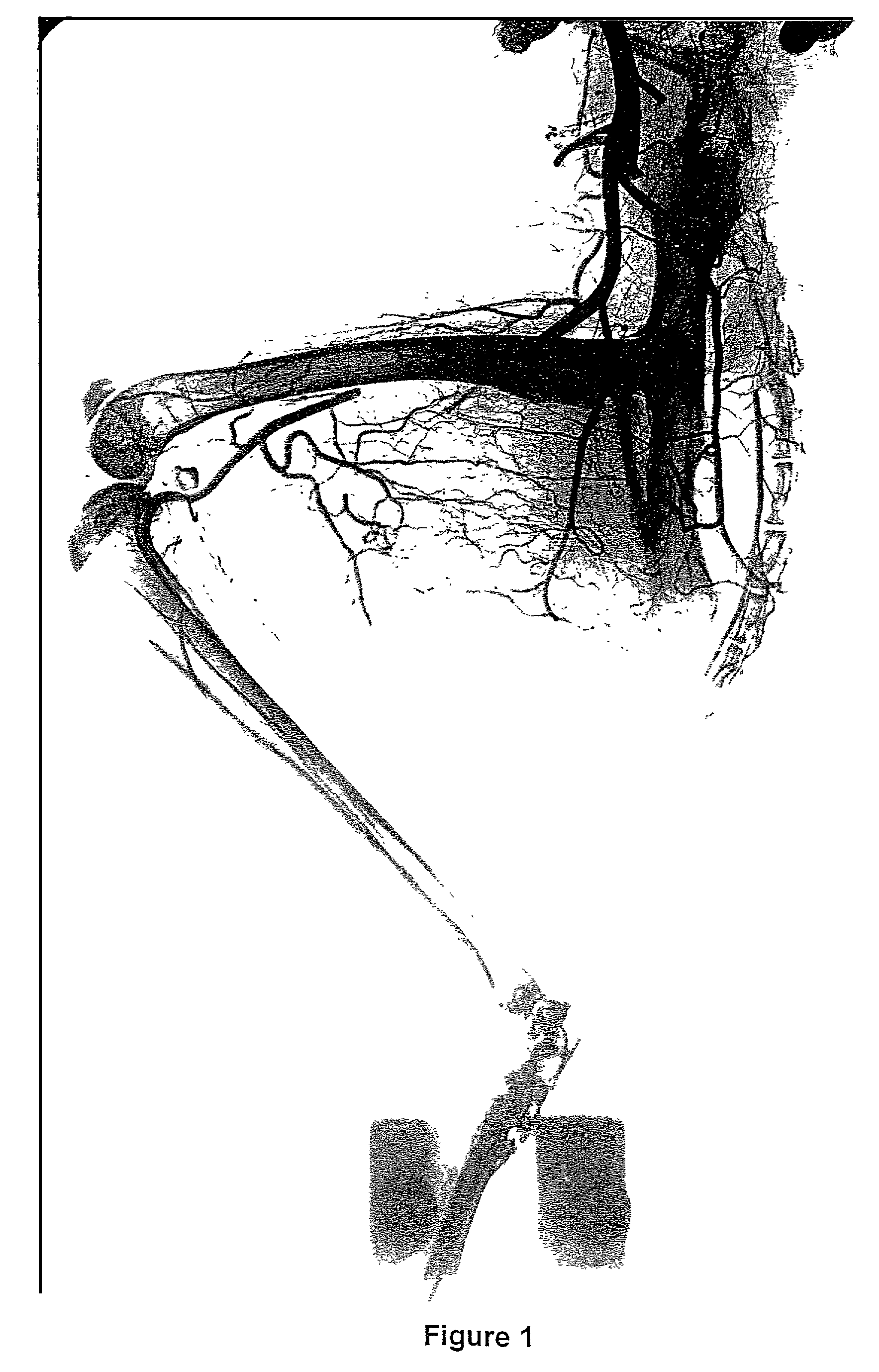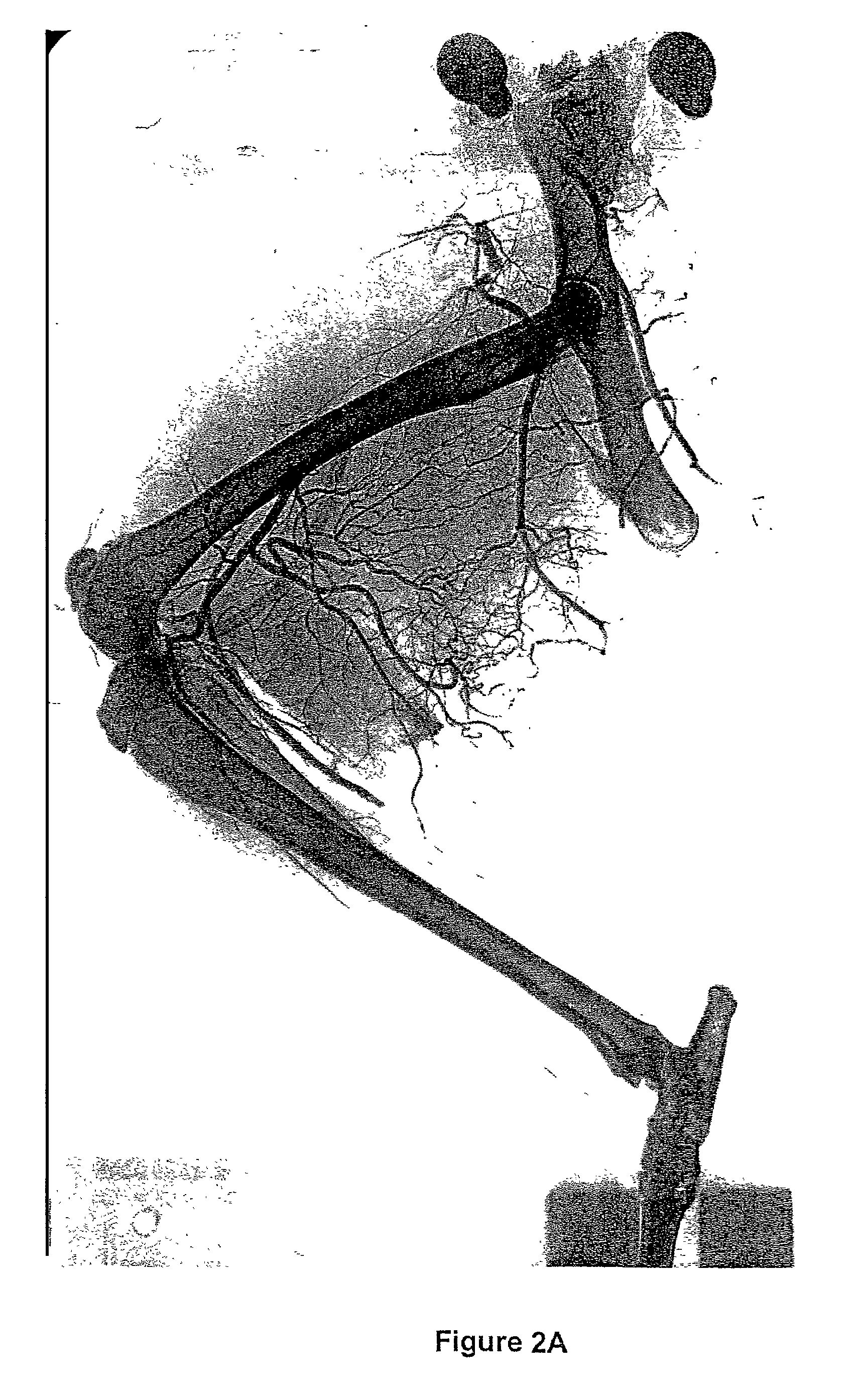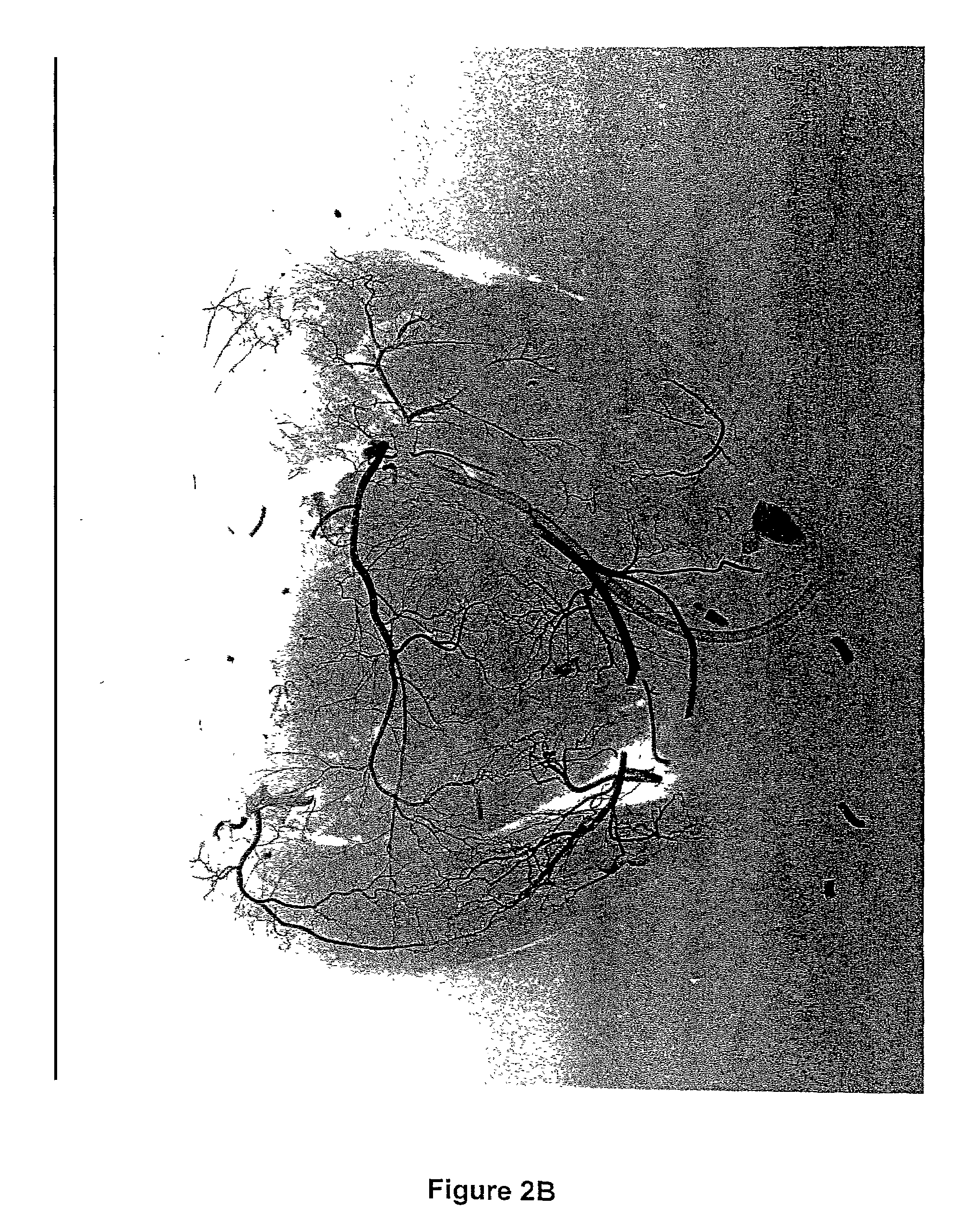Methods for the modulation of neovascularization and/or the growth of collateral arteries and/or other arteries from preexisting arteriolar connections
a technology of collateral arteries and growth factors, which is applied in the direction of angiogenin, metabolism disorders, drug compositions, etc., can solve the problems of not being able to modulate the growth of preexisting arteriolar connections into true collateral arteries, no established treatment for a high risk of restenosis for former patients, etc., to achieve enhancing neovascularization and/or collateral growth,
- Summary
- Abstract
- Description
- Claims
- Application Information
AI Technical Summary
Benefits of technology
Problems solved by technology
Method used
Image
Examples
example 1
Femoral Artery Occlusion of Animals and Local Delivery of Agents
[0067]The present study was performed with the permission of the State of Hessen, Regierungspräsidium Darmstadt, according to section 8 of the German Law for the Protection of Animals. It confirms with the Guide for the Care und Use of Laboratoy Animals published by the US National Institut of Health (NIH Publication No. 85-23, revised 1985).
[0068]6 rabbits were subjected to 7 days of right femoral artery occlusion. They were randomly assigned to either receive GM-CSF (Novartis, Nuernberg, Germany) (2ML-2, Alza Corp; 3 μg in 2 mL PBS at a rate of 10 μL / h) or PBS locally via osmotic minipump. For the initial implantation of the osmotic minipumps, the animals were anesthetized with an intramuscular injection of ketamine hydrochloride (40 to 80 mg / kg body weight) and xylazine (8 to 9 mg / kg body weight). Supplementary doses of anesthetic (10% to 20% of the initial dose) were given intravenously as needed. The surgical proce...
example 2
Ex Vivo Pressure-flow Relations
[0070]Maximum vasodilation was achieved by injecting 20 mg papaverine (Sigma) to the shunt at a flow rate of 20 ml / min. After stabilization of peripheral and central pressures both legs were perfused via four different pressure. Each pressure gradient was combined with a bolus of microspheres.
[0071]Five different perfusion pressures (30, 40, 50, 60, 80 mmHg) were generated in vivo with a roller pump installed in the above mentioned shunt between carotid artery and abdominal aorta. Peripheral pressures and collateral flows were measured under maximal vasodilation (papaverine) using Statham pressure transducers.
[0072]For each pressure level microspheres with a different fluorescent color (either crimson, scarlett, blue-green, red or blue) were injected into the mixing chamber, which was installed in the carotid-abdominal aortic shunt.
[0073]The following muscles were dissected from the leg: Quadriceps, adductor longus, adductor magnus, gastrocnemius, sole...
example 3
Post Mortem Angiography
[0085]Legs were perfused with Krebs-Henseleit buffered saline in a warmed waterbath of 37° C. for 1 minute at a pressure of 80 mmHg, followed by perfusion with contrast medium (8 to 10 minutes at 80 mmHg) based on bismuth and gelatin according to a formula developed by Fulton (Fulton: The Coronary Arteries, Thomas Books, 1965). Subsequently, the contrast medium was allowed to gel by placing the limbs on crushed ice for 45 minutes. Angiograms were taken at two different angles in a Balteau radiography apparatus (Machlett Laboratories) using a single-enveloped Structurix D7DW film (AGFA). The resulting stereoscopic pictures allowed analysis of collateral growth in three dimensions.
[0086]To differentiate between collateral vessels and muscle vessels for further quantification, Longland's definition of collateral arteries was used (Longland et.al. 1954 “Description of collateral arteries” Verlag: Thomas). Stem, midzone and re-entry were identified under stereoscop...
PUM
| Property | Measurement | Unit |
|---|---|---|
| Biological properties | aaaaa | aaaaa |
Abstract
Description
Claims
Application Information
 Login to View More
Login to View More - R&D
- Intellectual Property
- Life Sciences
- Materials
- Tech Scout
- Unparalleled Data Quality
- Higher Quality Content
- 60% Fewer Hallucinations
Browse by: Latest US Patents, China's latest patents, Technical Efficacy Thesaurus, Application Domain, Technology Topic, Popular Technical Reports.
© 2025 PatSnap. All rights reserved.Legal|Privacy policy|Modern Slavery Act Transparency Statement|Sitemap|About US| Contact US: help@patsnap.com



